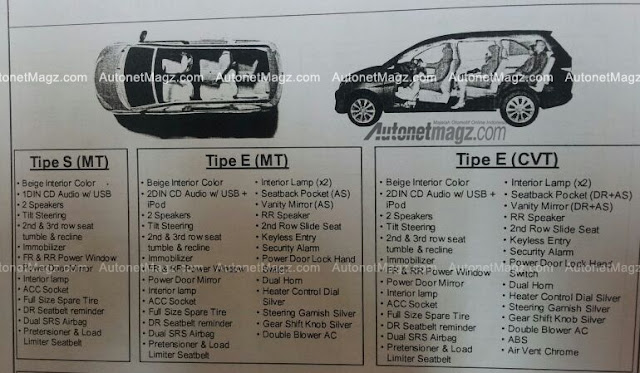The ninth iteration of Honda Accord has been launched in Malaysia. Locally assembled in Honda Melaka plant, the new Honda Accord is priced very competitively starting from only RM139,800 for the base 2.0 VTi model, which makes it cheaper even than the Korean entry. Two other models are available, a higher specification 2.0L VTi-L at RM149,800 and 2.4L VTi-L at RM172,800. Fellow Japanese rival Toyota Camry starts at RM149,915 for 2.0E and topped by 2.5L variant at RM180,917. The sleek Mazda6 is also pricier at RM159,455 for the 2.0L model and RM189,728 although it is CBU. So Honda has nailed it this time around as far as pricing is concern.
If pricing alone won't entice you, you'll be glad to know that the new Honda Accord is more comprehensively equipped than the outgoing car. Luxury amenities is thrown in more generously, and this is being topped by the new clothes that is more prestigious with its crisp body surfacing, intricate light detailing and classier interior design.
The base 2.0L VTi comes with beige interior upholstered in fabric. There are two screen in dashboard, the smaller and lower one for audio system while the larger upper mounted screen is for i-MID. There's also dual zone aircond, rear aircond duct and parking sensor. The exterior is garnished by 17' alloy wheel, LED day time running light and LED rear combi. Auto headlamp function is included too.
Opting for the higher specs VTi-L version gains you a dark cabin upholstered in leather trim, electrically adjustable driver seat, key less entry, starter button, hands-free Bluetooth functionality, cruise control, intelligent automatic airconditioning, rear door sunshade, sat-nav, HDD audio and DVD player. Both 2.0L variant soldiers on the carried over SOHC 2.0L linked to 5 speed automatic transmission. The engine has been massaged for greater refinement and economy, pushing out 155PS and 190Nm.

The 2.4L version is loaded with all bell and whistles that Honda currently knows how to make. The headlight is pulled out from the brand's luxury arm Acura, and LED item with auto-levelling and the car shod on 18' alloy wheel. The interior is decked out with paddle shifter, rear view mirror with auto dimming, wood trim, powered passenger seat, powered rear glass sunshade and premium sub woofer. Safety is upped too with 4 airbags in addition to the driving aids called LaneWatch and Active Cornering Light. The engine is new, replacing the K24 mill. It is of the Earth Dream Technology umbrella although it lacks the direct injection system. The new engine makes 175PS@6,200rpm and 225Nm@4,000rpm. Ultimate horsepower is slightly less than the outgoing engine although it is 7% more economy and 6% lighter.
In tune with the new Honda Civic, the 9th-gen Honda Accord is smaller than its predecessor. Compared to the outgoing model, the new Honda Accord is 80mm shorter at 4,870mm, 25mm shorter wheelbase at 2,775mm, 5mm wider at 1,850mm and 10mm lower at 1,465mm. Space however has not been compromised at rear legroom increased by 35mm while the boot is 23L more than before. All has been achieved thanks to the more efficient packaging including thinner seat structure.Honda also has replaced the double wishbone suspension at the front with McPherson strut while the rear end end is still multi-link.
Price comparison with the fellow Japanese rival is as mentioned above. In terms of dimension, Toyota Camry measures 4,825mm long, 1,825mm wide and 1,470mm tall. Its wheelbase is similar to the new Honda Accord at 2,775mm and boot stands in at 515L, a lot smaller than Accord. Mazda6 is a tad shorter at 4,850mm, 1,840mm wide, lower at 1,450mm, longer wheelbase at 2,830mm but cosier in terms cabin space and the boot volume is a good deal smaller too.
Small gallery can be found after the jump.





.jpg)
.jpg)

.jpg)



































